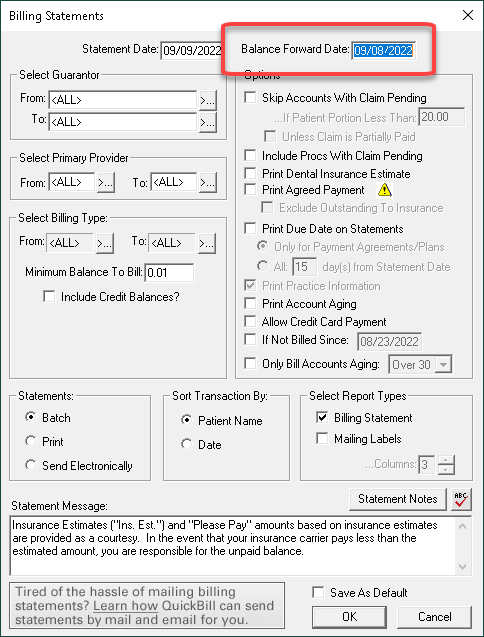By their design, Dentrix billing statements show patients procedures, payments, and adjustments that occurred within the previous month. Transactions that are older are totaled and presented on the first line of the statement as a “Balance Forward” with total amount due. Because it takes time for insurance carriers to respond and pay claims, it may take more than 30 days to close the claim and communicate with the patient what their final responsibility is. By the time they receive their statement, patients might not remember what the outstanding services were or which family member they were performed for when they are bundled together into that single “Balance Forward” line.
Changing the Balance Forward Date backward 45 or 60 days in your billing statement options can help eliminate this confusion for your patients. The balance forward date determines how far in the past to itemize procedures, payments, or transactions on the statement.

When printing individual statements from the Ledger (Ledger > Print > Statement), the Balance Forward date will always be 30 days previous to the current date. It cannot be changed when generating statements here.
However, when running statements through the Office Manager (Office Manager > Reports > Billing), you can enter a different date. The Balance Forward Date in the Billing Statements dialog box will always default to a date of one month previous from the current date, and you must change it as needed each time you generate statements this way.

When you set up Billing Statements through the Task Scheduler (Office Manager > Maintenance > Task Scheduler), you can set a span of time (for example, you could choose 45 days instead of 30). This will be saved with the task settings and used every time the task runs to automatically generate statements on the task’s assigned schedule.

By understanding how the Balance Forward Date works, and how to make changes based on where in Dentrix you generate statements from, you can provide to your patients a more detailed history of their transactions.
Learn More
For additional information, read the following:





